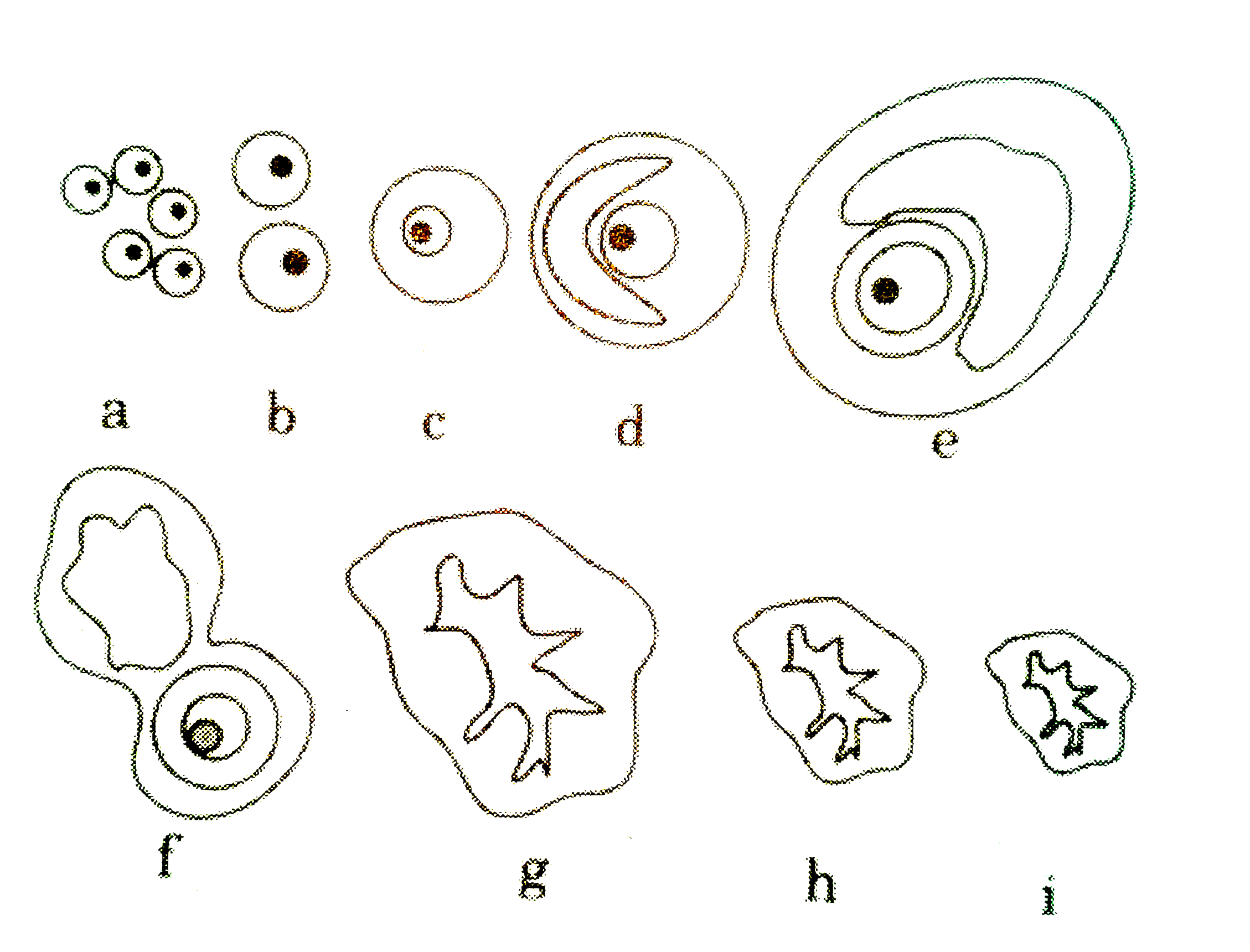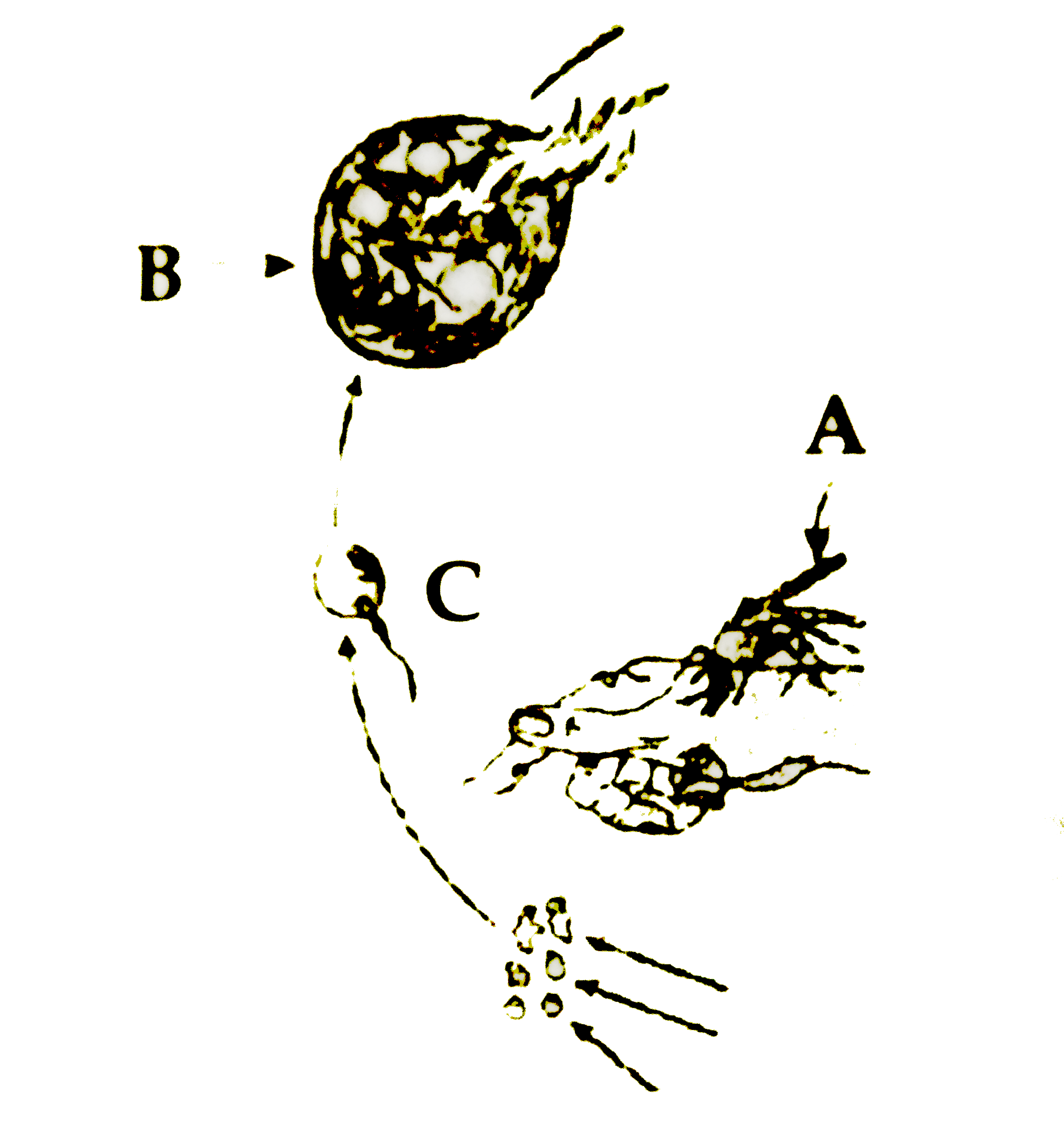Some important events in the human female reproductive cycle are given below. Arrange the events in a proper squence.
A- Secretion of FSH, B - Growth of corpus luteum,
C- Growth of the follicle and oogenesis, D- Ovulation
E - Sudden increase in the levels of LH.
a) A → D → C → E → B
b) B → A → C → D → E
c) C → A → D → B → E
d) A → C → E → D → B
The correct Answer is:D
To arrange the events in the human female reproductive cycle in the proper sequence, we can follow these steps:
1. Secretion of FSH (Follicle Stimulating Hormone): The cycle begins with the secretion of FSH from the anterior pituitary gland. This hormone is crucial for the growth and maturation of ovarian follicles.
Hint: Remember that FSH is the initial hormone that kick-starts the reproductive cycle.
2. Growth of the Follicle and Oogenesis: Following the secretion of FSH, the follicles in the ovaries begin to grow, and oogenesis (the development of eggs) occurs. This step is marked by the letter C.
Hint: Think of this step as the preparation phase where the eggs are maturing.
3. Sudden Increase in the Levels of LH (Luteinizing Hormone): After the follicles have matured, there is a sudden surge in LH levels. This surge is critical for triggering ovulation.
Hint: LH surge is like a signal that tells the body it's time for ovulation.
4. Ovulation: The increase in LH levels leads to ovulation, which is the release of the mature egg from the ovary. This step is marked by the letter D.
Hint: Ovulation is the event where the egg is released, so it's a key moment in the cycle.
5. Growth of Corpus Luteum: After ovulation, the ruptured follicle transforms into the corpus luteum, which secretes hormones to support a potential pregnancy. This step is marked by the letter B.
Hint: The corpus luteum is essential for maintaining the early stages of pregnancy if fertilization occurs.
Putting it all together, the correct sequence of events is:
- A: Secretion of FSH
- C: Growth of the follicle and oogenesis
- E: Sudden increase in the levels of LH
- D: Ovulation
- B: Growth of corpus luteum
Thus, the final sequence is A, C, E, D, B.
Final Answer: A, C, E, D, B
- A: Secretion of FSH
- C: Growth of the follicle and oogenesis
- E: Sudden increase in the levels of LH
- D: Ovulation
- B: Growth of corpus luteum
Topper's Solved these Questions
- ORGANISMS AND POPULATIONBOOK - NCERT FINGERTPS ENGLISHCHAPTER - ORGANISMS AND POPULATIONEXERCISE - Organisms And Population
175 Videos
- PRINCIPLES OF INHERITANCE & VARIATIONBOOK - NCERT FINGERTPS ENGLISHCHAPTER - PRINCIPLES OF INHERITANCE & VARIATIONEXERCISE - Principles Of Inheritance & Variation
167 Videos
Similar Questions
Below is given the unorganised list of some important events in the human female reproductive cycle. Identify the correct sequence of these events and select the correct option.
(i). Secretion of FSH
(ii). Growth of corpus luteum
(iii). Growth of the follicle
(iv). Ovulation
(v) Sudden increase in the levels of LH
View SolutionRead the following statements regarding menstrual cycle in females :
A. It is the reproductive cycle in all mammalian females.
B. The menstrual flow results due to breakdown of myometrium lining of uterus.
C. Graafian follicle and endometrium of uterus regenerates simultaneously during follicular phase of menstrual cycle.
D. The corpus luteum secretes large amounts of oestrogen which is essential for maintenance of endometrium.
select the correct statement from the above ?
View Solution
Knowledge Check
Below is given the unorganised list of some important events in the human female reproductive cycle. Identify the correct sequence of these events and select the correct option.
(i). Secretion of FSH
(ii). Growth of corpus luteum
(iii). Growth of the follicle
(iv). Ovulation
(v) Sudden increase in the levels of LHA(i) → (ii) → (iii) → (v) (ii)B(ii)→(i)→(iii)→(iv)→(v)C(iii)→(i)→(iv)→(ii)→(v)D(i)→(iii)→(v)→(iv)→(ii)some important events that occur during the menstrual cycle are given below. Arrange the events in a proper sequence and select the corrrect option.
(i). Proliferation of endometrial wall
(ii). LH surge
(iii). Secretion of estrogen
(iv). Secretion of progesterone
(v). Ovulation
(vi). Growth of corpus luteum
(vii). Degeneration of corpus luteum
(viii). menstruationA(ii)→(iv)→(iii)→(i)→(vii)→(v)→(viii)→(vi)B(iii)→(i)→(ii)→(v)→(vi)→(iv)→(vii)→(viii)C(v)to(i)to(vi)to(viii)to(iii)to(iv)to(vii)to(ii)D(ii)→(v)→(vi)→(i)→(viii)→(vii)→(iii)→(iv)
The following is the illustration of the sequence of ovarian events ''a'' to ''I'' in a human female :

(a) Identify the figure that illustrates corpus luteum and name the pituitary hormone that inhuences its formation.
(b) Specify the endocrine function of corpus luteum. How does it influence the uterus? Why is it essential?
(c) What is the difference between “d” and “e”?
(d) Draw a neat labelled sketch of Graafian follicle.
View SolutionThe following is the illustration of the sequence of ovarian events (a - 1) in a human female. (a) Identify the figure that illustrates ovulation and mention the stage of oogenesis it represents.
(b) Name the pituitary hormone that has caused the above mentioned event.
(c) Explain the changes that occur in the uterus simultaneously in anticipation
(d) Write the differences between 'c and 'h'.
(e ) Draw a labelled sketch of the structure of a human ovum prior to fertilization.

View SolutionStudy a part of the life cycle of malarial parasite given below. Answer the questions that follows: (a) Mention the roles of 'A' in the life cycle of the malarial parasite.
(b) Name the event 'C' and the organ where this event occurs .
(c) Identify the organ 'B' and name the cells being released from it.

View SolutionGiven below are the steps involved in sewage treatment. Arrange them in proper sequence and select the correct option.
A. Passage of primary effluent into large aeration tanks for mechanical agitation and pumping of air.
B. Passage of secondary effluent and formation of activated sludge.
C. Physical removal of particles through filtration and sedimentation
D. Release of effluent from the secondary treatment plant into natural water bodies.
E. Growth of useful aerobic microbes into flocs which significantly reduce the BOD.
View SolutionGiven below are four statement (A-D) each with one of two blanks .Select the option which correctly fill up the blanks in two statements
A The human male ejaculates about (i) million sperms during a cooitus . Out of which for normal fertility at teast (iii) percent sperms must have normal shape and size
B. A primary spermatocyte completes (i) meiotic division leading to the formation of two equal haploid cells called (i)
C. Spermatogenesis starts at the age of (i) due to significant increase in the secretion of (ii) a hypothalamic hormone
D. Oogenesisi is initiated during embryonic development and at puberty only (i) primary follicles are left in each overy
View SolutionGiven below are the events that are observed in an artificial hybridization programme. Arrange them in the correct sequential order in which they are followed in the hybridization programme. (a)re-bagging , (b)selection of parents , (c )bagging , (d)dusting the pollen on stigma , (e)emasculation , (f)collection of pollen from male parent.
View Solution
